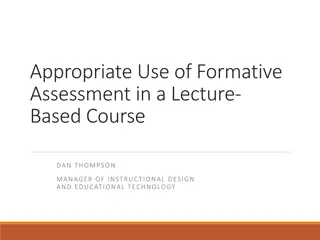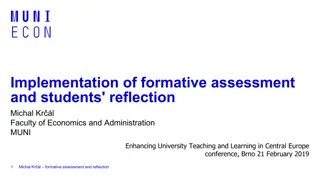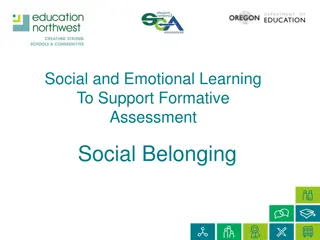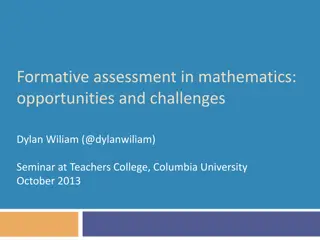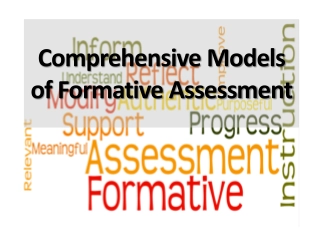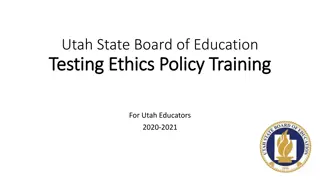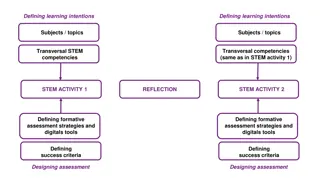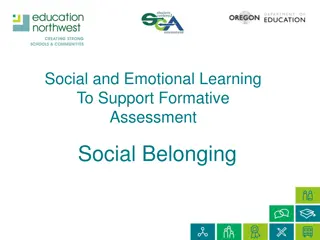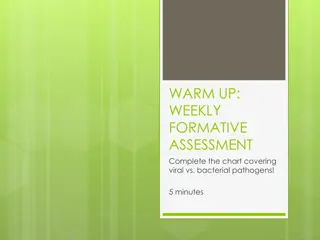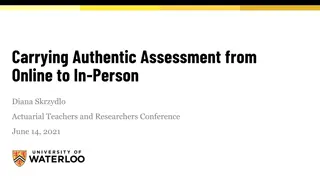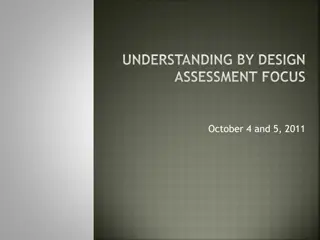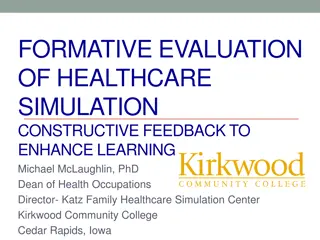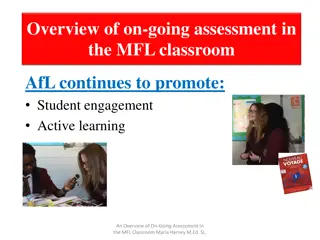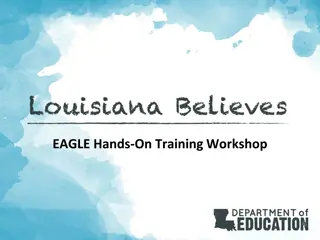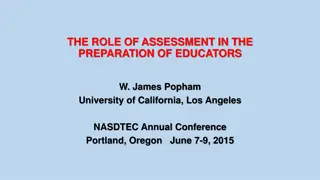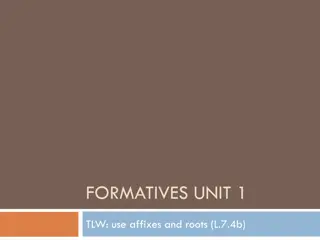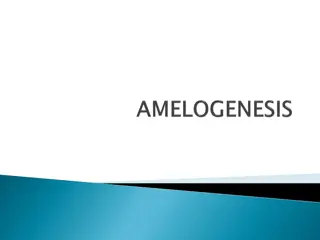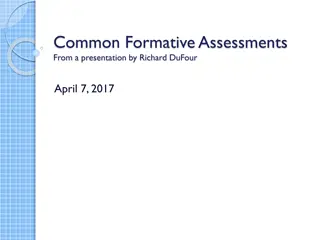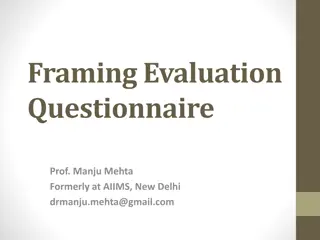Formative Assessment: What It Is and What It Isn't
Understanding the essence of formative assessment, this presentation explores the impact of teacher quality on student achievement, the necessity for continuous improvement, and the evolving workplace skills. It emphasizes the importance of adapting teacher practices to enhance learning outcomes. Additionally, it delves into relevant studies and highlights the correlation between learning outcomes and professional development.
Download Presentation

Please find below an Image/Link to download the presentation.
The content on the website is provided AS IS for your information and personal use only. It may not be sold, licensed, or shared on other websites without obtaining consent from the author. Download presentation by click this link. If you encounter any issues during the download, it is possible that the publisher has removed the file from their server.
E N D
Presentation Transcript
Formative Assessment: what it is and what it isn t; when it works and when it doesn t. Alberta Assessment Consortium Fall Conference Edmonton, AB: October 2011 Dylan Wiliam www.dylanwiliam.net
Overview: science and design We need to improve student achievement This requires improving teacher quality Improving the quality of entrants takes too long So we have to make the teachers we have better We can change teachers in a range of ways Some will benefit students, and some will not. Those that do involve changes in teacher practice Science Changing practice requires new kinds of teacher learning And new models of professional development. Design
Raising achievement matters For individuals Increased lifetime salary Improved health Longer life For society Lower criminal justice costs Lower health-care costs Increased economic growth Net present value to Canada of a 25 point increase on PISA: $4 trn (Hanushek & Woessman, 2010)
Which of the following categories of skill is disappearing from the work-place most rapidly? 1. Routine manual 2. Non-routine manual 3. Routine cognitive 4. Complex communication 5. Expert thinking/problem-solving
but what is learned matters too Autor, Levy & Murnane, 2003
now more than ever $35.00 $30.00 $25.00 Dropout HS Diploma Some College BA/BSc Prof Degree $20.00 $15.00 $10.00 $5.00 $0.00 1973 1975 1977 1979 1981 1983 1985 1987 1989 1991 1993 1995 1997 1999 2001 2003 2005 Source: Economic Policy Institute
Relevant studies Fuchs & Fuchs (1986) Natriello (1987) Crooks (1988) Banger-Drowns, et al. (1991) Kluger & DeNisi (1996) Black & Wiliam (1998) Nyquist (2003) Dempster (1991, 1992) Elshout-Mohr (1994) Brookhart (2004) Allal & Lopez (2005) K ller (2005) Brookhart (2007) Wiliam (2007) Hattie & Timperley (2007) Shute (2008)
The formative assessment hi-jack Long-cycle Span: across units, terms Length: four weeks to one year Impact: Student monitoring; curriculum alignment Medium-cycle Span: within and between teaching units Length: one to four weeks Impact: Improved, student-involved, assessment; teacher cognition about learning Short-cycle Span: within and between lessons Length: day-by-day: 24 to 48 hours minute-by-minute: 5 seconds to 2 hours Impact: classroom practice; student engagement
Which of these are formative? A. District science supervisor uses test results to plan professional development workshops for teachers B. Teachers doing item-by-item analysis of 5th grade math tests to review their 5th grade curriculum C. A school tests students every 10 weeks to predict which students are on course to pass the state test in March D. Three-fourths of the way through a unit test E. Students who fail a test on Friday have to come back on Saturday F. Exit pass question: What is the difference between mass and weight? G. Sketch the graph of y equals one over one plus x squared on your mini-white boards.
Unpacking formative assessment Key processes Establishing where the learners are in their learning Establishing where they are going Working out how to get there Participants Teachers Peers Learners
Aspects of formative assessment Where the learner is going Where the learner is How to get there Engineering effective discussions, tasks and activities that elicit evidence of learning Providing feedback that moves learners forward Clarify and share learning intentions Teacher Understand and share learning intentions Activating students as learning resources for one another Peer Understand learning intentions Activating students as owners of their own learning Learner
Five key strategies Clarifying, understanding, and sharing learning intentions curriculum philosophy Engineering effective classroom discussions, tasks and activities that elicit evidence of learning classroom discourse, interactive whole-class teaching Providing feedback that moves learners forward feedback Activating students as learning resources for one another collaborative learning, reciprocal teaching, peer-assessment Activating students as owners of their own learning metacognition, motivation, interest, attribution, self- assessment (Wiliam & Thompson, 2007)
and one big idea Use evidence about learning to adapt instruction to meet student needs
An educational positioning system A good teacher Establishes where the students are in their learning Identifies the learning destination Carefully plans a route Begins the learning journey Makes regular checks on progress on the way Makes adjustments to the course as conditions dictate
Strategies and practical techniques for classroom formative assessment
Eliciting evidence Key idea: questioning should cause thinking provide data that informs teaching Improving teacher questioning generating questions with colleagues closed v open low-order v high-order appropriate wait-time Getting away from I-R-E basketball rather than serial table-tennis No hands up (except to ask a question) Hot Seat questioning All-student response systems Class polls, ABCD cards, Mini white-boards, Exit passes
Questioning in maths: discussion Look at the following sequence: 3, 7, 11, 15, 19, . Which is the best rule to describe the sequence? A. n + 4 B. 3 + n C. 4n - 1 D. 4n + 3
Questioning in maths: diagnosis In which of these right-angled triangles is a2 + b2 = c2 ? b c A B a a c b a c C D b b c a a b E F c c b a
Questioning in science: discussion Ice-cubes are added to a glass of water. What happens to the level of the water as the ice- cubes melt? A.The level of the water drops B. The level of the water stays the same C. The level of the water increases D.You need more information to be sure
Questioning in science: diagnosis The ball sitting on the table is not moving. It is not moving because: A. no forces are pushing or pulling on the ball. B. gravity is pulling down, but the table is in the way. C. the table pushes up with the same force that gravity pulls down D. gravity is holding it onto the table. E. there is a force inside the ball keeping it from rolling off the table Wilson & Draney, 2004
Questioning in English: discussion Macbeth: mad or bad?
Questioning in English: diagnosis Where is the verb in this sentence? The dog ran across the road C D A B
Questioning in English: diagnosis Which of these is correct? A. Its on its way. B. It s on its way. C. Its on it s way. D. It s on it s way.
Differentiation (2) Identify the adverbs in these sentences: 1. The boy ran across the street quickly. (A) (B) (C) (D) (E) 2. Jayne usually crossed the street in a leisurely fashion. (A) (B) (C) (D) (E) 3. Fred ran the race well but unsuccessfully. (A) (B) (C) (D) (E)
Questioning in English: diagnosis Which of these is the best thesis statement? A. The typical TV show has 9 violent incidents B. The essay I am going to write is about violence on TV C. There is a lot of violence on TV D. The amount of violence on TV should be reduced E. Some programs are more violent than others F. Violence is included in programs to boost ratings G.Violence on TV is interesting H.I don t like the violence on TV
Questioning in history: discussion In which year did World War II begin? A. 1919 B. 1938 C. 1939 D. 1940 E. 1941
Questioning in history: diagnosis Why are historians concerned with bias when analyzing sources? A. People can never be trusted to tell the truth B. People deliberately leave out important details C. People are only able to provide meaningful information if they experienced an event firsthand D. People interpret the same event in different ways, according to their experience E. People are unaware of the motivations for their actions F. People get confused about sequences of events
Questioning in MFL: discussion Is the verb tre regular in French?
Questioning in MFL: diagnosis Which of the following is the correct translation for Igive the book to him ? A. Yo lo doy el libro. B. Yo doy le el libro. C. Yo le doy el libro. D. Yo doy lo el libro. E. Yo doy el libro le. F. Yo doy el libro lo.
Hinge Questions A hinge question is based on the important concept in a lesson that is critical for students to understand before you move on in the lesson. The question should fall about midway during the lesson. Every student must respond to the question within two minutes. You must be able to collect and interpret the responses from all students in 30 seconds
Real-time test: Figurative language 1. 2. 3. 4. 5. He was like a bull in a china shop. This backpack weighs a ton. The sweetly smiling sunshine He honked his horn at the cyclist. He was as tall as a house. A. B. C. D. E. Alliteration Hyperbole Onomatopoeia Personification Simile
Kinds of feedback: Israel 264 low and high ability grade 6 students in 12 classes in 4 schools; analysis of 132 students at top and bottom of each class Same teaching, same aims, same teachers, same classwork Three kinds of feedback: scores, comments, scores+comments Achievement Attitude High scorers : positive Low scorers: negative Scores no gain High scorers : positive Low scorers : positive Comments 30% gain [Butler(1988) Br. J. Educ. Psychol., 58 1-14]
Responses Achievement Attitude High scorers : positive Low scorers: negative Scores no gain High scorers : positive Low scorers : positive Comments 30% gain What do you think happened for the students given both scores and comments? A. Gain: 30%; Attitude: all positive B. Gain: 30%; Attitude: high scorers positive, low scorers negative C. Gain: 0%; Attitude: all positive D. Gain: 0%; Attitude: high scorers positive, low scorers negative E. Something else [Butler(1988) Br. J. Educ. Psychol., 58 1-14]
Kinds of feedback: Israel (2) 200 grade 5 and 6 Israeli students Divergent thinking tasks 4 matched groups experimental group 1 (EG1); comments experimental group 2 (EG2); grades experimental group 3 (EG3); praise control group (CG); no feedback Achievement EG1>(EG2 EG3 CG) Ego-involvement (EG2 EG3)>(EG1 CG) [Butler (1987) J. Educ. Psychol.79 474-482]
Effects of feedback Kluger & DeNisi (1996) review of 3000 research reports Excluding those: without adequate controls with poor design with fewer than 10 participants where performance was not measured without details of effect sizes left 131 reports, 607 effect sizes, involving 12652 individuals On average, feedback increases achievement Effect sizes highly variable 38% (50 out of 131) of effect sizes were negative
Provide feedback that moves learning on Key idea: feedback should cause thinking provide guidance on how to improve Comment-only grading Focused grading Explicit reference to rubrics Suggestions on how to improve Not giving complete solutions Re-timing assessment (eg three-fourths-of-the-way-through-a-unit test)
Share learning intentions Explain learning intentions at start of lesson/unit Learning intentions Success criteria Consider providing learning intentions and success criteria in students language Use posters of key words to talk about learning e.g., describe, explain, evaluate Use planning and writing frames Use annotated examples of different standards to flesh out assessment rubrics (e.g. lab reports) Provide opportunities for students to design their own tests
Help students be learning resources Students assessing their peers work pre-flight checklist two stars and a wish choose-swap-choose Training students to pose questions/identifying group weaknesses End-of-lesson students review
Help students own their own learning Students assessing their own work with scoring rubrics with exemplars learning portfolios Self-assessment of understanding Traffic lights Red/green discs Coloured cups
Thank you www.dylanwiliam.net


